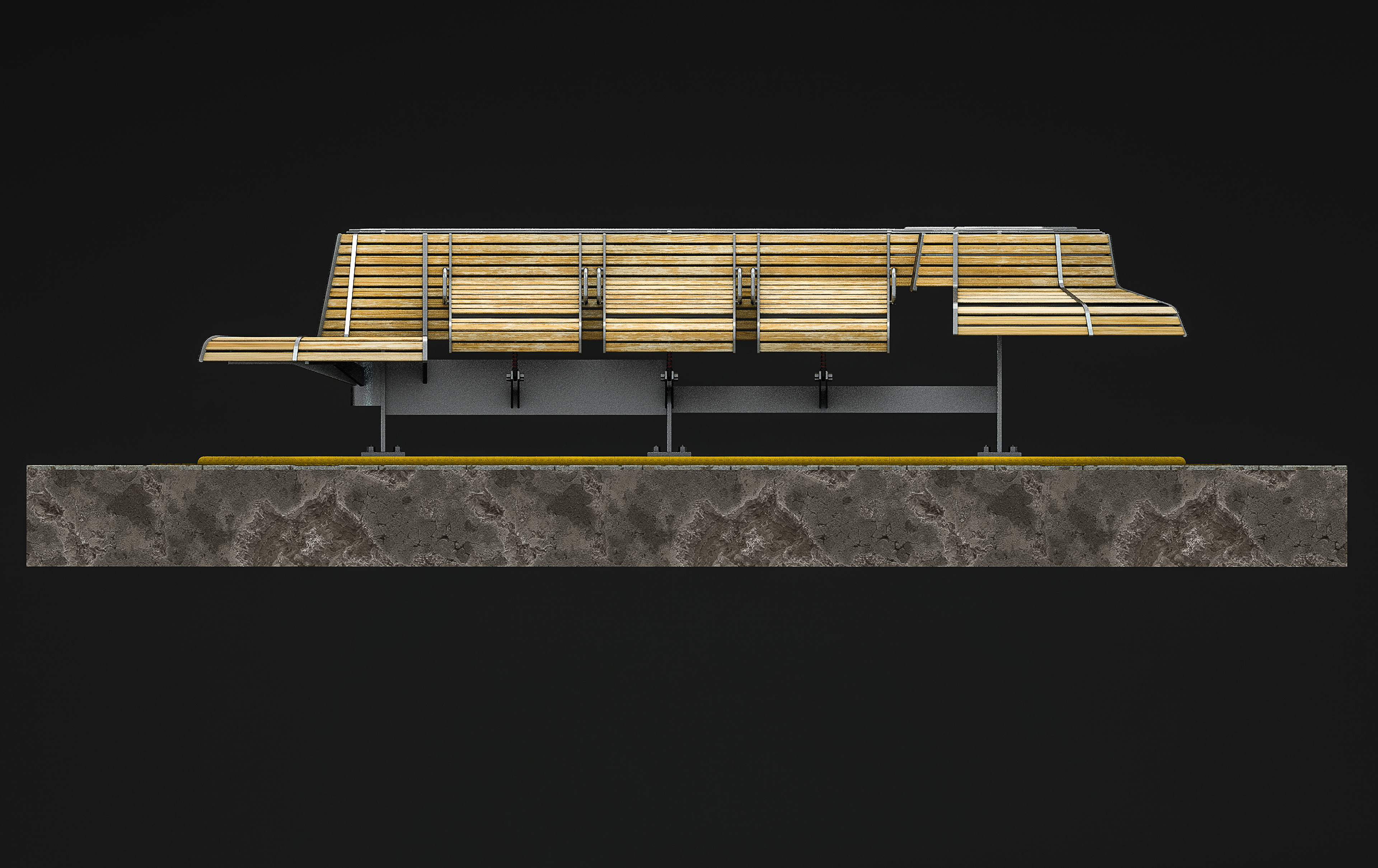D-Bench is the result of research carried out during a course in universal design at university. The aim of the course was to make a bench as accessible as possible. This led us to develop a multi-zone bench. Each zone is designed and conceived for a particular target group, without forgetting the scenario in which it is used, the underground. In total there are three different zones, divided by small spaces.
The first zone is designed for people with normal mobility and for blind people. A high seat makes it possible to rest the legs, but at the same time being ready to stand up quickly when the train arrives. Moreover, being higher it is easier to approach for blind people who will also be guided by the floor paths. Thanks to a slat placed on the bench with brail signs, blind people will be informed of the presence of the seat.
The second section of the bench is designed for older, overweight people and people with reduced mobility. This seat is guided and the shock absorbers underneath help people to sit down and stand up. The pistons are designed not only to help people standing up, but also to slow down the descent when sitting; in fact the hydraulic pistons avoid heavy impacts to the bottom, while the spring will provide the necessary push to go up. According to calculations, the thrust should not exceed 25 kg of force to allow even the smallest people to sit up.
The third and final part is designed for parents, children and people traveling with backpacks and bags. This area, which has no armrests, allows bags and equipment to be placed next to each other without having to put them on the ground. In addition, the slightly backward sloping seat makes it difficult for a child to slip out of it.
Other details such as the concrete plinth have been added to make it easier for blind people to use the bench. One of the bench slat with braille information was intentionally designed in black to be more visible thanks to the contrast with the other bench slats in light wood and thus allowing people with reduced sight ability to identify the bench.


